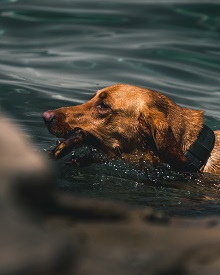Introducing a canine companion to the world of boating can be a delightful experience, but it also comes with its own set of challenges. One of the key considerations for boating enthusiasts with dogs is ensuring a safe and comfortable way for their furry friends to board and disembark from the vessel.
This is where the design of dog boat ramps comes into play, blending functionality, safety, and pet-friendly features.

Concepts and Principles
Let’s delve into the design concepts and principles that underlie effective dog boat ramps.
1. Safety First
Safety is the cornerstone of any successful dog boat ramp design. Ramps should be constructed with stable materials that can withstand both the dog’s weight and environmental conditions.
The ramp’s surface must be non-slip, providing a secure foothold for the dog even when wet. A railing or side barriers can offer extra security, preventing accidental falls during the boarding process.
2. Adaptability
Designs should be adaptable to different boat types and sizes. The ramp’s length, angle, and dimensions should be adjustable to suit the specific boat’s height and configuration.
This adaptability ensures a seamless integration with various vessels, making it a versatile choice for boaters.
3. Comfortable Incline
The incline of the ramp is crucial for the dog’s comfort and ease of use. A gradual slope is preferable, allowing the dog to walk up or down without feeling overwhelmed.
A too-steep ramp might discourage the dog from using it, while an overly shallow incline could make it challenging for the dog to maintain its balance.
4. Materials Matter
Choosing the right materials is paramount. Marine-grade materials that are resistant to water, corrosion, and UV damage are recommended. The ramp’s framework should be sturdy, capable of supporting the dog’s weight and providing stability.
The walking surface should be gentle on the dog’s paws while offering traction.
5. Training Integration
The design should facilitate training and transition. Dogs might not be accustomed to ramps initially, so including features that encourage a positive learning experience is important.
A gradual incline, non-slip surface, and well-placed safety railings can instill confidence in the dog, making them more likely to use the ramp willingly.
6. Portability and Storage
For boaters who frequent different locations, a portable ramp is a valuable asset.
Foldable designs that are easy to carry and store offer convenience while maintaining the ramp’s functionality.
7. Aesthetics and Appeal
While the primary focus is functionality, aesthetics also play a role. A well-designed ramp complements the boat’s overall appearance and creates a cohesive look.
Integrating the ramp seamlessly into the boat’s design makes it a natural extension of the vessel.
8. Longevity and Maintenance
Durability is key. Using high-quality materials and construction methods ensures the ramp’s longevity.
Regular maintenance checks, including inspecting the structure, non-slip surface, and attachments, are essential for the ramp’s continued safe use.

Conclusion
Designing a dog boat ramp is a thoughtful process that involves combining safety, adaptability, comfort, and aesthetics. The ideal ramp strikes a balance between these factors, creating a valuable addition to any boating experience.
By adhering to these design concepts and principles, boat owners can provide their furry companions with a safe and enjoyable way to partake in aquatic adventures, strengthening the bond between pet and owner while promoting responsible boating practices.
 Doreen
Doreen